Lung Cancer Survival Rate
The 5-year lung cancer survival rate is 28.4%, according to the American Lung Association (ALA). However, you may be able to live longer with lung cancer depending on your treatment plan and how you respond. Explore survival rates and how to work toward becoming a survivor below.
What Is the Survival Rate of Lung Cancer?
Survival rate describes how many patients are alive a certain amount of time after being diagnosed with lung cancer. It’s typically measured in years. The 5-year lung cancer survival rate is 28.4%. This means about 1 in 4 patients are still alive 5 years after diagnosis.
That said, it may be possible for you to live for many years, or even decades, with lung cancer. The best chance you have for outliving the average lung cancer survival rate is to get treatment from skilled doctors.
Different treatment options can stop lung cancer from spreading for longer spans of time or even cure you. Other factors, like how far lung cancer has spread when it’s diagnosed, your overall health, age, and more also play a role in how long you’ll survive.
Get our Free Lung Cancer Guide to better understand survival rates and explore treatments that may allow you to live longer.

- Understand risk factors
- Find top treatments
- Pursue compensation
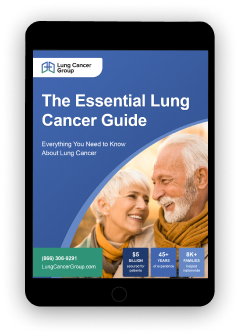


Lung Cancer Survival Rate vs. Life Expectancy
Survival rates and life expectancies are two statistics doctors use to measure a lung cancer prognosis. However, the two terms are not the same. Life expectancy is the average amount of time other patients with a diagnosis similar to yours have lived for.
The average life expectancy for lung cancer ranges from 7-16 months, but some patients live for decades thanks to treatments. It’s also important to know that every patient is different and while these figures are helpful as a guide, they don’t define your unique situation. Your medical team can provide more accurate expectations as you move forward with treatment.
Survival Rates by Lung Cancer Type
There are two main types of lung cancer: Non-small cell lung cancer (NSCLC) and small cell lung cancer (SCLC). NSCLC patients typically have better survival rates, but it’s possible to live a long time with any type. View survival rates by type below.
Non-Small Cell Lung Cancer Survival Rates
The overall 5-year survival rate for non-small cell lung cancer is 32%, according to the American Cancer Society (ACS). However, if your cancer is caught in an early stage and responds well to treatment, you’ll have a better chance of achieving long-term survival.
Your doctors may also determine that you have a subtype of NSCLC. These subtypes have unique survival rates. The most common subtype is adenocarcinoma and the 5-year survival rate is 12%, as noted by the U.S. National Library of Medicine.
Small Cell Lung Cancer Survival Rate
Small cell lung cancer is a less common type of lung cancer that spreads quickly. This makes it harder to treat. Patients with SCLC have an overall 5-year survival rate of only 9%, as noted by the ACS. Still, long-term survivorship could be possible even if you have SCLC depending on your treatments.
Asbestos Lung Cancer Survival Rate
Other than smoking, asbestos exposure can cause or contribute to a lung cancer diagnosis.The overall 5-year survival rate in these cases is 32%, with patients living longer if they’re diagnosed before the cancer spreads.
Call (877) 446-5767 for help finding and affording treatments that could help you live longer with any type of lung cancer. Our team is standing by to assist you.
Survival Rates by Lung Cancer Stage
Lung cancer stage allows doctors to track how far the cancer has spread through the body. Survival statistics tend to be higher in earlier stages, since the cancer hasn’t spread and is easier to treat. View stages of lung cancer and their survival rates below.
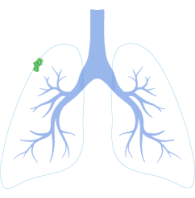

Stage 1 Lung Cancer Survival Rate
In stage 1, the cancer has not yet spread outside the lung.The 5-year survival rate for stage 1 lung cancer ranges from 70%-90%. Stage 1 lung cancer patients typically have the most treatment options available, meaning there’s a better chance they’ll be considered cured and become long-term survivors.
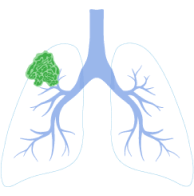

Stage 2 Lung Cancer Survival Rate
The 5-year lung cancer survival rate in this stage is 50%-60%. Stage 2 lung cancer has started to spread through the lungs and nearby lymph nodes. However, it’s not gotten far so treatments can help many patients live a long time.
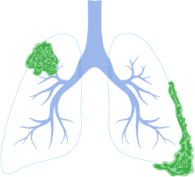

Stage 3 Lung Cancer Survival Rate
The 5-year survival rate for stage 3 lung cancer is 20%-40%. By stage 3, the cancer has spread further and surgery may or may not be possible. This may prevent patients from living longer. Doctors can still recommend treatments to improve long-term survival, though.
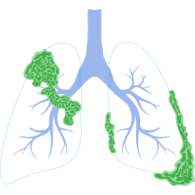

Stage 4 Lung Cancer Survival Rate
By stage 4 lung cancer, distant metastasis (spread to other parts of the body) has occurred. Cancer may have reached organs like the liver or brain, making it hard to treat. The 5-year survival rate for stage 4 is between 3% and 9% as a result. However, some patients still respond well to treatment and live for many years.
Lung Cancer Survival Rate by Demographic
Besides the stage and type, lung cancer survival rates may also vary depending on demographics like a patient’s sex, race, and age. See how these factors could impact your lung cancer survival time and get a better idea of what to expect.
Sex of the Patient
Women have slightly higher lung cancer survival rates than men. The American Society of Clinical Oncology (ASCO) found that men have an overall 5-year lung cancer survival rate of 18%, while women have a 5-year survival rate of 25%.
Lung Cancer Survival Rates by Age
Younger patients have better lung cancer survival rates, according to the National Cancer Institute’s Surveillance, Epidemiology, and End Results (SEER) Program. SEER data revealed that lung cancer patients under the age of 50 had a 5-year survival rate of 41.6% Those aged 65 or older had a 5-year survival rate of 26.5%.
Race of the Patient
A study in the Journal of Thoracic Oncology revealed that race may affect lung cancer survival rates. In the U.S., the national 5-year NSCLC survival rate is 15% among Black patients and 18% among white patients.
Get our Free Lung Cancer Guide to learn more about factors that affect survival rates and options that can potentially help you live longer.



- Understand risk factors
- Find top treatments
- Pursue compensation



Improving Lung Cancer Survival Rates With Treatment
Getting treatment gives patients the best chance of outliving the average lung cancer survival rates, particularly if the cancer is diagnosed in an early stage. Lung cancer treatments allow doctors to remove or destroy tumors.
Learn how different treatments impact lung cancer survival rates below.
Chemotherapy
This treatment uses powerful medicines to kill rapidly growing lung cancer cells. Patients with stage 4 lung cancer who received chemotherapy had a 5-year survival rate of 14% in a study from the Journal of Clinical Oncology. This is much higher than the average survival rate for this stage.
Immunotherapy
Immunotherapy medications train the body to fight cancer. Different lung cancer immunotherapy drugs include Keytruda®, Opdivo®, and Yervoy®. The 5-year Keytruda lung cancer survival rate ranged between 18.4% and 19.4% when used with chemotherapy to treat stage 4 patients.
Radiation Therapy
Radiation therapy involves using types of radiation, such as X-rays, to kill cancerous cells. Early-stage patients had 3-year survival rates ranging from 55% to 91%, depending on the type of lung cancer radiation used.
Surgery
Surgeons remove the lung lobe or all of the lung that the cancer has grown into, along with all visible tumors. The 5-year survival rate after lung cancer surgery is around 65%, according to a Thoracic Oncology: Original Research study.
Targeted Cell Therapy
This is a kind of cancer treatment that targets mutations in cancer cells that cause them to grow, divide, and spread. The 1-, 3-, and 5-year survival rates for lung cancer patients treated with targeted therapy were 91.9%, 83.8%, and 83.8%, respectively, in a 2021 study.
Lung Cancer Survival Rate Without Treatment
Lung cancer survival rates are significantly lower in patients who do not receive any treatments. For instance, the 5-year survival rate of stage 1 NSCLC is just 21.8%, according to an Annals of Thoracic Surgery report. By contrast, patients who receive treatment have a 5-year survival of up to 90%.
Get Treatment to Live Longer With Lung Cancer
If you or someone you love has recently been diagnosed with lung cancer, the best way to improve your chances of long-term survival is to get treatment. Experienced lung cancer doctors can recommend different treatments that can potentially improve your survival rate.
In some instances, patients have greatly surpassed the average survival rates to become long-term survivors, living for 20 years or more — even with advanced lung cancer.
We can help you better understand potential treatments that may be used to help you live longer with lung cancer, and how you can afford them. Get our Free Lung Cancer Guide now or call (877) 446-5767.
Lung Cancer Survival Rate FAQs
What’s the mesothelioma vs. lung cancer survival rate?
Mesothelioma is a cancer caused by asbestos that affects the mesothelium, which is the body’s internal lining. Mesothelioma has 5-year survival rate of 12%, which is less favorable than the 5-year survival rate of lung cancer at 28.4%.
With that said, it may be possible for you to live longer than the average lung cancer or mesothelioma survival rates. If you are diagnosed with an early stage of either one of these cancers and treated promptly, long-term survivorship may not be out of the question.
What’s the stage 4 lung cancer survival rate by age?
Younger stage 4 lung cancer patients have better survival rates, according to SEER data. The 5-year survival rate for stage 4 lung cancer patients under the age of 50 is nearly 21%. For those aged 65 and up, the 5-year survival rate is just 8%.
Even with stage 4 cancer, younger patients tend to be stronger and healthier, meaning they may qualify for more aggressive treatments that can extend their life span. With that said, even older stage 4 lung cancer patients could become long-term survivors, depending on how they respond to treatment.
What's the survival rate of stage 3 lung cancer?
The survival rate of stage 3 lung cancer is 20%-40%, according to the Roswell Park Comprehensive Cancer Center. Stage 3 lung cancer means that the tumors have spread further through the body, but aggressive treatments can still potentially help you live longer.
Find out more about treatments that could help you survive stage 3 lung cancer and how to afford them in our Free Lung Cancer Guide.
What affects lung cancer survival rates?
Many factors affect lung cancer survival rates, including what type of this cancer you have, its stage, your age, and your overall health. The best way to improve your lung cancer survival rate is to get treated. Without treatment, lung cancer has a very poor survival rate.
Is lung cancer always fatal?
No, lung cancer isn’t always fatal. With treatment, patients may outlive typical survival rates by years or decades and become lung cancer survivors. Patients have a better chance of survivorship if they have early-stage cancer, but even late-stage patients can live a long time in some cases.
Does lung cancer go into remission?
Yes, in some cases, lung cancer can go into remission. This is where there are fewer or no signs of the cancer. It may be possible to live longer than the average survival rate if your cancer is in remission.
An oncology (cancer) health care provider can tell you if it’s likely that your cancer will enter remission following treatment. Even if you don’t achieve remission, different therapies can still potentially help you live longer.
What are some ways to improve the lung cancer survival rate?
You can potentially improve your lung cancer survival rate by getting treatments. Your doctors can recommend specific therapies to help you live longer. Surgery, chemotherapy, radiation, and immunotherapy are all commonly used to improve survival.
Contact us now to learn about lung cancer treatments and resources you can access to offset or lower your health care costs.

